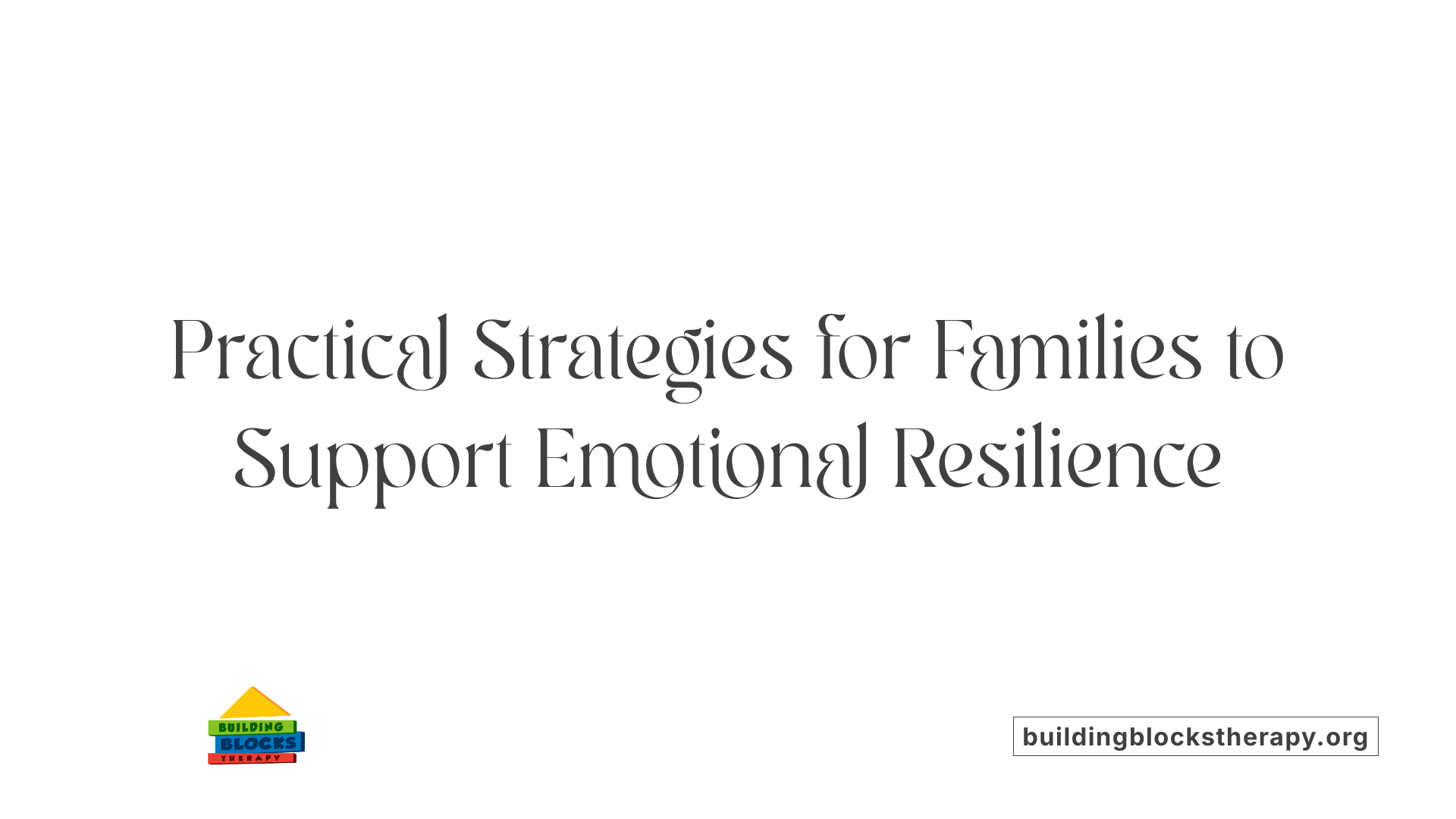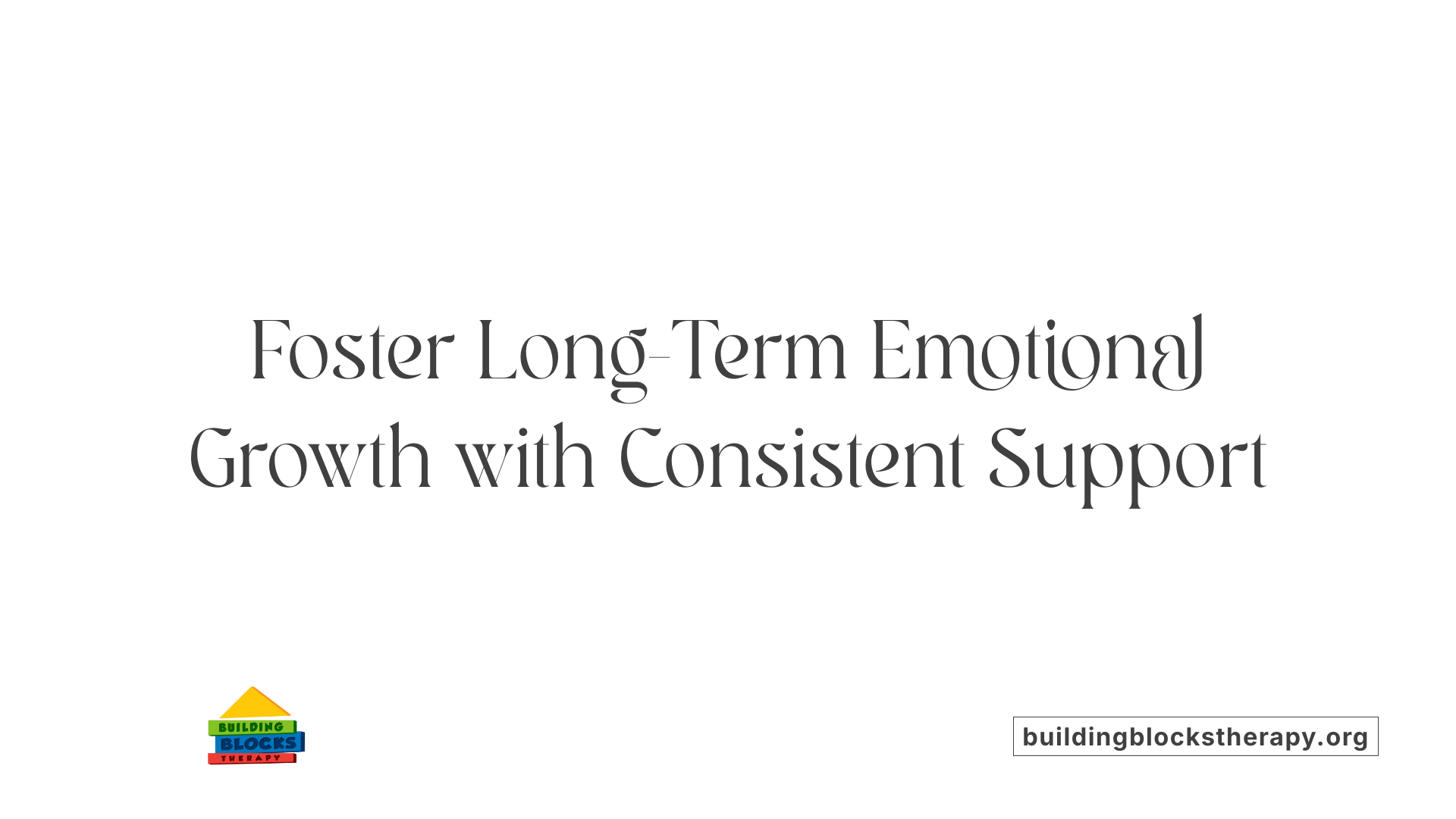Understanding the Significance of Emotional Support in Autism Therapy
Autism Spectrum Disorder (ASD) presents unique challenges, especially when it comes to managing emotional responses like disappointment. Applied Behavior Analysis (ABA) therapy, rooted in scientific principles, offers targeted strategies to help children with autism develop resilience, emotional regulation, and social skills. This article explores how ABA supports children in handling setbacks, fostering independence, and strengthening their capacity to manage complex feelings.
Tailored Social Skills Training Through ABA Techniques
How does ABA therapy support children with autism in managing disappointment?
ABA (Applied Behavior Analysis) therapy is a structured, science-based approach that helps children with autism develop essential skills to better handle life’s challenges, including disappointment. One of the core aspects involves teaching emotional regulation techniques, such as deep breathing and calming strategies, often supported by visual aids and verbal prompts. These tools assist children in recognizing and managing their feelings in a healthy way.
Therapists design individualized behavior plans focused on positive reinforcement, a strategy where desirable behaviors are rewarded to encourage repetition. This approach not only promotes social skills but also reduces behaviors like tantrums or toy throwing that may stem from frustration.
A significant part of ABA involves gradual exposure to new or changing situations in a controlled, supportive manner. Through repeated practice, children learn to tolerate transitions—such as moving from one activity to another or accepting 'no'—which are common sources of disappointment.
Techniques like shaping behaviors, reinforcement, and social skills training help children develop appropriate responses to setbacks, increasing their resilience over time. For instance, children can be taught to express disappointment calmly or seek solutions instead of reacting negatively.
Creating a supportive, structured environment is crucial. ABA emphasizes consistency, patience, and positive reinforcement, fostering emotional awareness and adaptive responses. Over time, these strategies help children with autism become more flexible, resilient, and capable of managing disappointments effectively, leading to improved emotional well-being and social interactions.
The Role of Personalization in Therapy Success

What are the benefits of ABA therapy in emotional regulation and behavioral management for children with autism?
ABA (Applied Behavior Analysis) therapy provides numerous advantages for children with autism, especially in developing emotional regulation and managing behaviors. It employs science-based techniques such as visual supports, modeling, and coping strategies like mindfulness to help children recognize and understand their emotions better.
One of the core strengths of ABA is its ability to tailor goals to each child's unique needs, allowing for more effective progress. This individualized approach helps children reduce problematic behaviors like tantrums, aggression, or self-injury by teaching more appropriate responses and coping skills.
Through consistent reinforcement and positive feedback, ABA supports children in building social skills, improving communication, and gaining independence in daily routines. These improvements not only enhance their emotional well-being but also foster resilience and self-awareness.
Early intervention is particularly powerful. When therapy begins during critical developmental periods, it leverages neuroplasticity—the brain's ability to reorganize itself—leading to more meaningful and lasting gains.
Overall, ABA helps children manage their feelings better, reduce behaviors that hinder learning and social interaction, and increase adaptive skills, ultimately contributing to a higher quality of life and greater independence.
Strategies for Building Acceptance and Flexibility

What strategies and techniques are used in ABA therapy to help children tolerate disappointment and accept 'no'?
ABA therapy offers a range of approaches to support children in managing disappointment and understanding boundaries.
One core method involves positive reinforcement. When a child responds appropriately to a boundary, such as accepting 'no,' they are rewarded with praise, tokens, or other preferred items. This encourages the recurrence of desired behaviors and helps establish emotional regulation.
Visual supports play a crucial role in this process. Tools like social stories, visual schedules, and "first/then" charts help children anticipate changes and understand what is expected of them. For instance, a social story might explain that sometimes, the answer is 'no,' and that's okay. Visual aids reduce anxiety, help children process disappointment, and teach coping strategies.
Educational techniques such as modelings, like demonstrating calm responses to 'no,' also teach children appropriate reactions.
Coping skills, including deep breathing exercises, requesting breaks, or using calming tools, help children manage feelings of frustration or disappointment.
Gradual exposure is another effective tactic. Children are slowly introduced to situations that might initially cause distress, building resilience over time.
Parent training sessions are vital, equipping families with consistent strategies and reinforcing the child's learning at home.
Finally, individualized behavior plans designed and overseen by licensed professionals help tailor these strategies to each child's unique needs, ensuring steady progress and better acceptance of boundaries.
Here’s a summary table outlining these techniques:
| Strategy | Description | Example/Details |
|---|---|---|
| Positive reinforcement | Reward desired behaviors to encourage repeat actions | Praise or tokens when child accepts 'no' calmly |
| Visual supports | Use visual tools to clarify expectations and transitions | Social stories explaining boundaries |
| Modeling | Demonstrate calm and appropriate reactions | Parent or therapist shows how to respond to 'no' |
| Teaching coping skills | Develop strategies to handle disappointment | Deep breathing, requesting breaks |
| Gradual desensitization | Slowly introduce challenging situations | Starting with simple boundary refusals, then progressing |
| Parent training | Educate caregivers on consistent use of strategies | Home routines, reinforcement techniques |
| Individualized behavior plans | Customized strategies overseen by professionals | Behavior plans addressing specific triggers and responses |
Overall, these strategies work together to help children develop patience, resilience, and acceptance of boundaries, supporting their emotional and social growth.
Developing Emotional Resilience and Self-Management
How does ABA therapy support the development of social skills and emotional resilience in children with autism?
ABA therapy plays a crucial role in enhancing both social competence and emotional resilience for children on the autism spectrum. It employs a variety of structured, scientific approaches designed to teach important social behaviors and help children manage their emotions effectively.
At the core of ABA are techniques such as modeling, role-playing, social stories, and visual supports. These methods provide children with clear examples and practice opportunities to understand social cues, take turns, and initiate conversations confidently. By using social stories and visual cues, children learn to anticipate social interactions and respond appropriately, which builds their confidence.
Reinforcement strategies are essential in ABA. When children exhibit desired behaviors—like sharing or emotional regulation—they are rewarded with preferred activities or objects. This positive reinforcement encourages repetition and helps children to develop consistent social habits.
Beyond teaching specific skills, ABA emphasizes generalization—ensuring children can apply what they learn across diverse settings such as home, school, and community environments. For example, a child who learns to say “please” and “thank you” during therapy sessions will be encouraged to do so in social situations outside of therapy.
Therapists also work closely with parents and caregivers, providing guidance on how to reinforce these skills daily. Consistent practice at home supports children in applying learned behaviors in real-life situations, which is vital for developing emotional resilience.
Moreover, ABA does not only focus on external behaviors but also on internal emotional skills. It helps children understand and regulate their feelings by teaching coping mechanisms like deep breathing and mindfulness. These strategies help children manage feelings of disappointment, frustration, or anxiety associated with social challenges.
Overall, ABA therapy systematically introduces children to social and emotional skills, reinforcing their abilities over time. This comprehensive approach fosters greater self-awareness, cooperation, and emotional strength, enabling children with autism to navigate social environments more effectively and build resilience against everyday challenges.
The Process and Impact of ABA in Managing Disappointment

What is the process and impact of ABA therapy on helping children with autism manage emotional challenges like disappointment?
ABA therapy, or Applied Behavior Analysis, plays a vital role in helping children with autism understand and manage their emotions, including feelings of disappointment. This approach is highly structured and individualized, focusing on teaching skills that enable children to cope better with emotional setbacks.
One of the main strategies involves systematic teaching of emotional regulation using visual supports such as charts, social stories, and modeling. These tools help children recognize their feelings, understand what they mean, and respond appropriately. For example, social stories might describe situations where disappointment occurs, alongside positive ways to handle it.
In addition to emotional recognition, ABA emphasizes reinforcement of adaptive behaviors. When a child applies a coping skill—like calming down after feeling disappointed—they are often rewarded through praise or preferred activities. This positive reinforcement encourages continued use of these strategies.
ABA also incorporates teaching practical coping mechanisms. Sensory strategies, such as deep breathing or using calming sensory objects, are introduced to help children manage feelings of discomfort or frustration. Cognitive strategies, including problem-solving and perspective-taking, are developed gradually to help children understand that disappointment is temporary and manageable.
Structured therapy sessions include role-playing, scenario practice, and gradual exposure to challenging situations, all within a safe environment. These methods build confidence and resilience, making it easier for children to handle real-life disappointments.
Over time, children become more emotionally aware and capable of self-regulation. The impact of ABA therapy is seen in increased ability to tolerate disappointment, improved social interactions, and greater independence in managing emotional responses.
Research supports that consistent, long-term ABA intervention significantly improves emotional and social functioning in children with autism. The tailored approach ensures that each child's unique needs are addressed, leading to meaningful progress in their emotional regulation and overall well-being.
This systematic, positive methodology equips children with the skills necessary not only for coping with disappointment but also for engaging in broader social contexts with confidence and resilience. ABA’s comprehensive focus on behavioral and emotional learning fosters healthier emotional development, essential for navigating everyday life.
Supporting Families in Navigating Emotional Challenges

What practical guidance can be provided to parents and caregivers to support children with autism in handling disappointment?
Supporting children with autism in managing disappointment is a vital part of their emotional development. Parents and caregivers play a crucial role in teaching children how to cope with setbacks and changes, which can often cause frustration or anxiety.
One of the most effective strategies is using clear, concrete language. Explaining changes or unexpected events in simple terms helps children understand what is happening and reduces feelings of confusion or fear. Visual supports, such as social stories, pictures, and schedules, are invaluable tools. These assist children in visualizing what to expect and prepare mentally for transitions or disappointments.
Creating a supportive environment involves validating children’s feelings with empathy. When children express frustration or sadness, acknowledging their emotions helps build trust and encourages open communication. Patience is essential, as children often need time to process emotions and adapt to new situations.
Developing coping mechanisms is another critical step. Role-playing scenarios, practicing deep breathing exercises, and using positive self-talk can equip children with strategies to calm themselves and regain composure. Building a 'calming toolbox' — containing sensory toys, calming music, or relaxation techniques — provides children with immediate ways to soothe themselves.
Setting realistic expectations is equally important. Collaborating with professionals, such as ABA therapists, helps tailor those expectations and strategies to each child's unique needs. Maintaining consistent routines and preparing children for changes ahead of time can reduce anxiety. For example, giving a gentle warning before a transition allows children time to adjust.
In addition to these techniques, supporting parents involves guiding them to seek resources and support networks. Parent training programs offer insights into effective discipline, communication, and emotional support techniques. Connecting with support groups can provide emotional relief, practical advice, and reassurance.
Overall, fostering resilience in children with autism requires a blend of clear communication, empathetic understanding, and consistent support. With patience and professional guidance, parents can help their children develop the skills necessary to handle disappointments in a healthy and constructive manner.
Creating Supportive Environments for Emotional Growth
How does ABA therapy support the development of social skills and emotional resilience in children with autism?
ABA therapy plays a crucial role in helping children with autism develop social skills and emotional resilience through structured and scientifically supported methods. These interventions focus on teaching children how to interact appropriately with others, understand social cues, and regulate their emotions.
One effective approach involves using modeling and role-playing activities to demonstrate positive social behaviors. Social stories are also used to prepare children for various social situations by illustrating expected behaviors and emotional responses. Visual supports like pictorial schedules, social stories, and visual cues help children understand what to expect and how to behave in different settings.
Reinforcement strategies are central to ABA therapy. When children demonstrate desirable social behaviors such as sharing, taking turns, or engaging in conversations, they receive positive reinforcement—like praise or rewards—which encourages them to repeat these behaviors. This reinforcement not only promotes skill acquisition but also helps them generalize these skills across various environments, including home, school, and community settings.
In addition to direct teaching, ABA promotes collaboration with parents and caregivers. This partnership ensures that learned skills are practiced consistently outside of therapy sessions, reinforcing the child's social and emotional development in daily life.
Beyond social skills, ABA supports emotional resilience by teaching children how to manage feelings like disappointment, frustration, or excitement. Techniques such as teaching coping strategies, mindfulness, and emotional regulation exercises strengthen children’s ability to handle challenging emotions effectively.
Overall, ABA systematically builds both social awareness and emotional strength. These skills empower children with autism to participate more fully in social activities, respond to emotional situations with appropriate behaviors, and adapt more flexibly to their environments.
Conclusion and Ongoing Support for Emotional Development

What are the long-term benefits of ABA therapy for emotional development?
ABA therapy offers lasting advantages that extend beyond immediate skill acquisition. Children who engage in intensive, consistent ABA programs typically show significant improvements in communication, social skills, and daily functioning. These foundational skills foster independence and resilience, enabling children to handle challenges, including emotional regulation and disappointment, more effectively over their lifetime. Moreover, learning to navigate social interactions and boundaries helps children develop confidence and adaptability, which are crucial for long-term success.
How does a holistic approach enhance emotional growth?
A comprehensive approach to autism support, combining ABA with strategies like mindfulness, self-regulation techniques, and family involvement, promotes emotional stability. Incorporating visual aids like social stories and sensory tools helps children manage anxiety and sensory overload—common sources of emotional distress. Teaching children coping mechanisms such as deep breathing, role-playing, and gradual exposure to change prepares them for real-world situations, reducing emotional outbursts and fostering adaptability. This holistic approach emphasizes not just behavioral improvement but also emotional well-being.
Why is continued parental involvement important?
Parental involvement remains essential throughout a child's development. Parents serve as primary supporters, implementing learned strategies at home and reinforcing the skills gained during therapy sessions. By staying engaged, parents can better understand their child's unique needs, monitor progress, and adapt routines accordingly. Ongoing education and participation in support groups empower parents to manage their own expectations and emotions, which positively influences their child's motivation and mental health.
| Aspect | Benefits | Details |
|---|---|---|
| Long-term stability | Builds resilience & independence | Enhances emotional regulation & social skills over time |
| Holistic strategies | Supports overall well-being | Combines behavioral techniques, mindfulness, sensory management |
| Parental engagement | Reinforces learning | Maintains consistency & adapts strategies at home |
As children grow, adjusting interventions and maintaining a positive, supportive environment are vital. Continuous collaboration among therapists, parents, and educational professionals ensures that children with autism are equipped to navigate emotional challenges and thrive socially and personally.
Fostering Emotional Growth and Resilience through ABA
ABA therapy is a comprehensive, evidence-based approach that supports children with autism in managing disappointment by fostering emotional regulation, social skills, and resilience. Through tailored interventions, positive reinforcement, visual supports, and collaboration with families, ABA helps children develop adaptive responses to setbacks, instilling confidence and independence. As children learn to navigate their emotions effectively, they are better equipped to handle life's challenges, ultimately enhancing their overall well-being and quality of life.
References
- How ABA Therapy Can Help Children with Autism Thrive
- Mastering the Art of Teaching (& Accepting) “No - How to ABA
- Easy Ways to Help your Autistic Child Handle Disappointment
- How to Help Your Kids Handle Disappointment - Child Mind Institute
- Applied Behavior Analysis (ABA) | Autism Speaks
- Children with Autism: The Importance of Self-Regulation Skills
- Should I Enroll My Child in ABA Therapy? A Guide for Parents
- Navigating the Storm: How to Deal With A Stubborn Autistic Child






